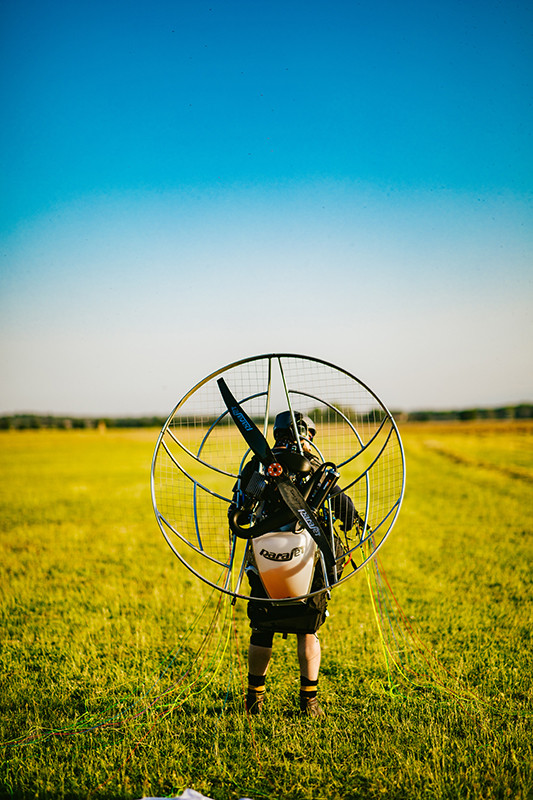 Skyweek is an epic skyward journey. A five hundred kilometre hop up the coast from Ancona on the Adriatic coast; then a jump inland, up to the famous fashion capital of Milan.
Skyweek is an epic skyward journey. A five hundred kilometre hop up the coast from Ancona on the Adriatic coast; then a jump inland, up to the famous fashion capital of Milan.
You’re probably thinking how somebody can cover such a distance with such a small motor strapped to their back? The answer is simple; it was a journey undertaken in pre-planned legs.
For paramotor pilots, the day starts early. The sun has yet to make an appearance above the horizon, twilight still creeps across the skyline, shards of sunlight glimmer over precipices in the far distance. It is a majestic start to the day.
At this point in the morning, my mind is electric. Looking out across the Italian countryside, I wipe my eyes. My thoughts ponder the task at hand, actioning the checklists that all paramotor pilots have been trained to do parrot-fashion, ticking off tasks in my mind; it’s methodical and mechanical work, perfect for those early hours.
I am constantly aware of the morning light that breaks across the horizon, every so often I glance up at the orange, yellow and blue streaks of sky above me and I wonder what the day will bring.
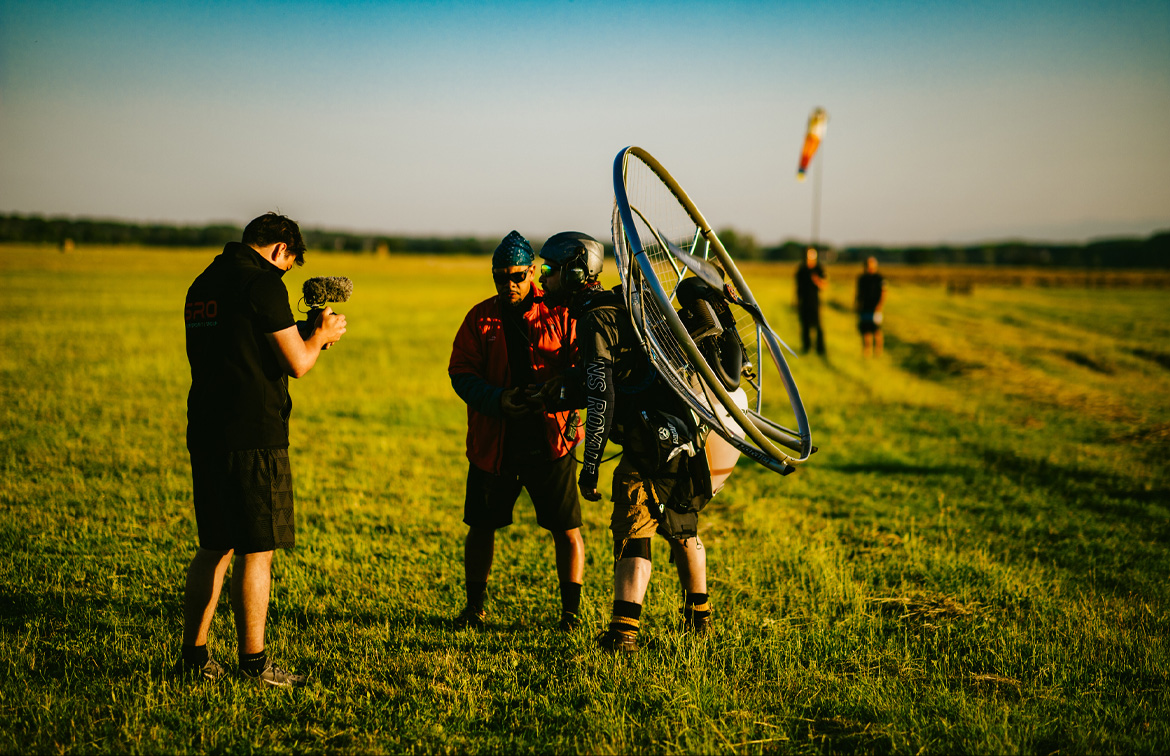
Will there be flights of glory and adrenaline ahead? or will it be the ever-patient waiting game? The sort of game all paramotor pilots hate, but alas have learned to respect. Safety is always at the core of my thoughts before taking off into the great blue, and my eyes are scanning the wind, the clarity of air – will we see far enough? I´m watching the sway of the trees, chimney smoke, cloud directions, the ripples of water on the lake, all these factors give a glimpse on how the day will pan out.
At this point in my paramotor development, I’ve completed my basic training, and I´m officially a qualified Paramotor Pilot, but at the same time still just a novice. The rush of excitement washes over me, and I must get all the touchpoints for a successful flight memorised; muscle memory is crucial here, and my nerves jitter as I contemplate the flight ahead.
A few fellow pilots have now begun to stir and awaken. We gather around the breakfast table on a campsite that is relatively close to our take-off point.
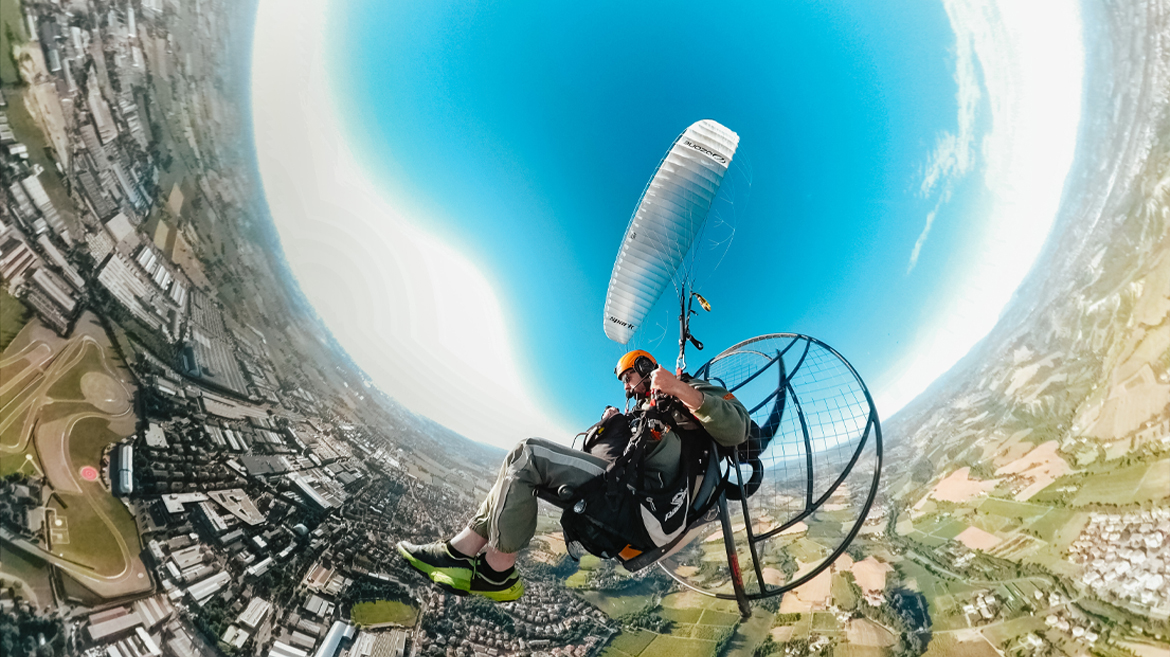 The British are notorious for their sarcasm first thing in the morning, so the banter between the pilots is in full flow, and because of it, we get strange looks from continental Europeans who probably think we’re a group of reckless misfits on holiday.
The British are notorious for their sarcasm first thing in the morning, so the banter between the pilots is in full flow, and because of it, we get strange looks from continental Europeans who probably think we’re a group of reckless misfits on holiday.
Something I’ve come to learn in this hobby is that most people have never seen a paramotor, so they stare at us quizzically like we’re unhinged daredevils, or on the other hand they show a genuine interest in what we do. Some people come over and talk to us, others, unfortunately, are too shy and instead stare us at curiously from a distance.
During the morning, there is a frantic rush to consume as much coffee, tea and stimulants as possible. Toilet breaks are always a good idea at this point, the last thing you need is an ache in your tummy at 4000ft, it’s a distracting and uncomfortable experience, to say the least…
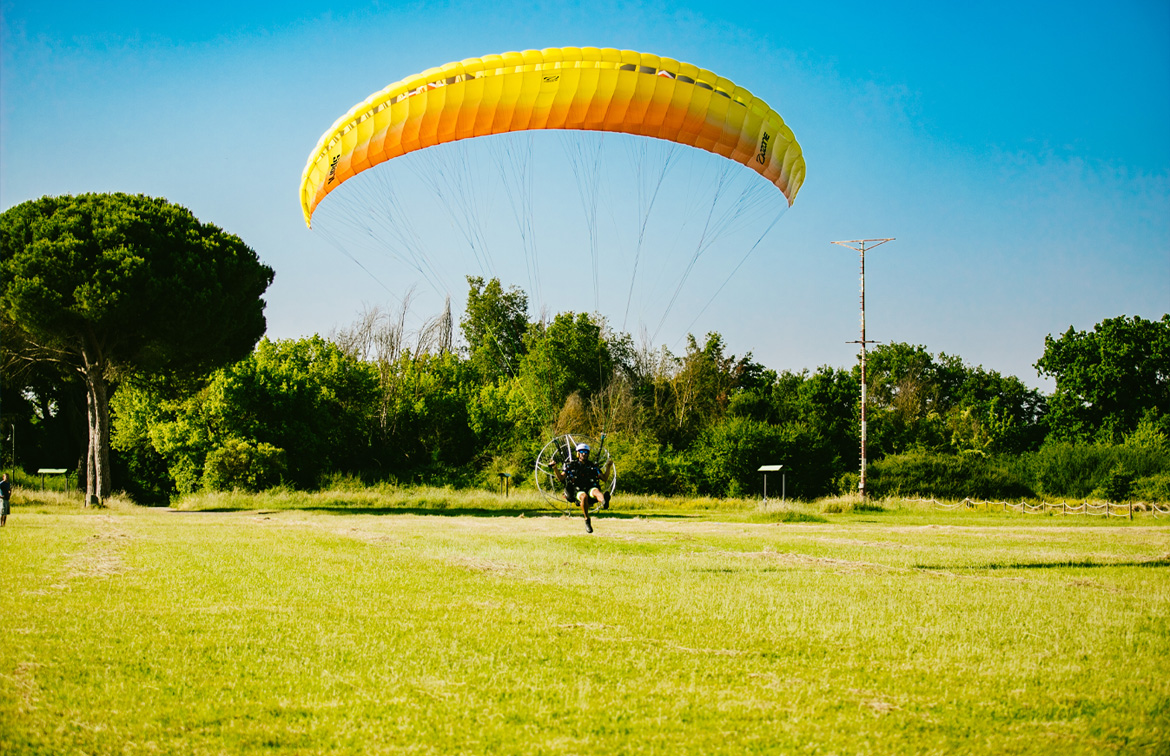
Cars arrive at the taking-off point, the expedition vehicle with the trailer with all our equipment follows. Pilots are all responsible for their gear, but in the unloading and packing away, we work together as a single team,
We steadily and carefully offload the equipment, (each paramotor weighs around a total of forty kilos); we fuel up all tanks. During most flights, we use about 8 litres, and it gives us approx — 1hour of flying. I have a fuel burn of about 2 litres every 15mins. We take our wings, (also weighing-in at around ten kilos) place them on the ground, de-tangle the coloured lines and set about getting the paramotor close enough to where we want to launch from, and then we take off.
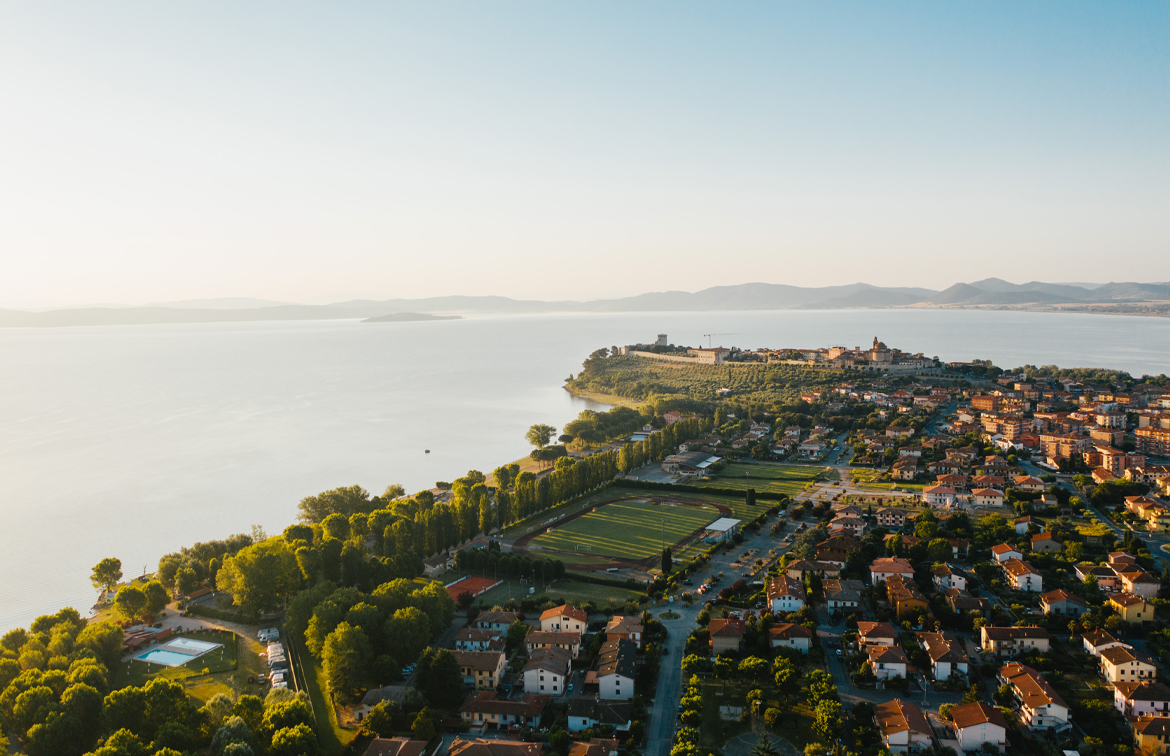
By now a couple of fellow pilots have taken off. The others watch them like hawks, assessing and scrutinising their movements and take-off sequences. On the ground watching, we have a CFI (Chief Flight Instructor,) he is responsible for all pilots taking off and landing. He makes sure we are performing the correct entry or exit movements above the airfield, and his role is also to keep us out of harm´s way and clear of no go areas. Our CFI for the expedition is a Brazilian guy called Riccy. What a guy! He could tell you some stories…
We always aspire to fly during good weather conditions and mastering ground techniques is a good starting point. Our first flights progress us through the learning curve, circuit training and in-flight exercises get us to speed with the technicalities and mastering to fly with the engine, wing, weather, flight dynamics, but at a slower than average pace – around 50kmph.
Awareness is always paramount, and sometimes there are those worrying experiences that encourage us to get back on solid ground when the weather suddenly changes without warning. Turbulence is not for the faint-hearted, I remember vividly the first time I hit turbulence, my heart rushed to my mouth, and stress instinctively hit me like a bolt of lightning – ‘Flee or Fight’, my brain screamed.
Ultimately , the effects of stress don’t matter, you’ve come this far, and you´ve learned to deal with it. You rely on your teachings and the ability to believe in your confidence to overcome anything that could paralyse you up in the air. Listening to the instructions coming over the radio is another safety aspect. Our CFI barks orders into our ears – that ever-watchful eye on the sky that looks after you and makes sure you get down to earth safely.
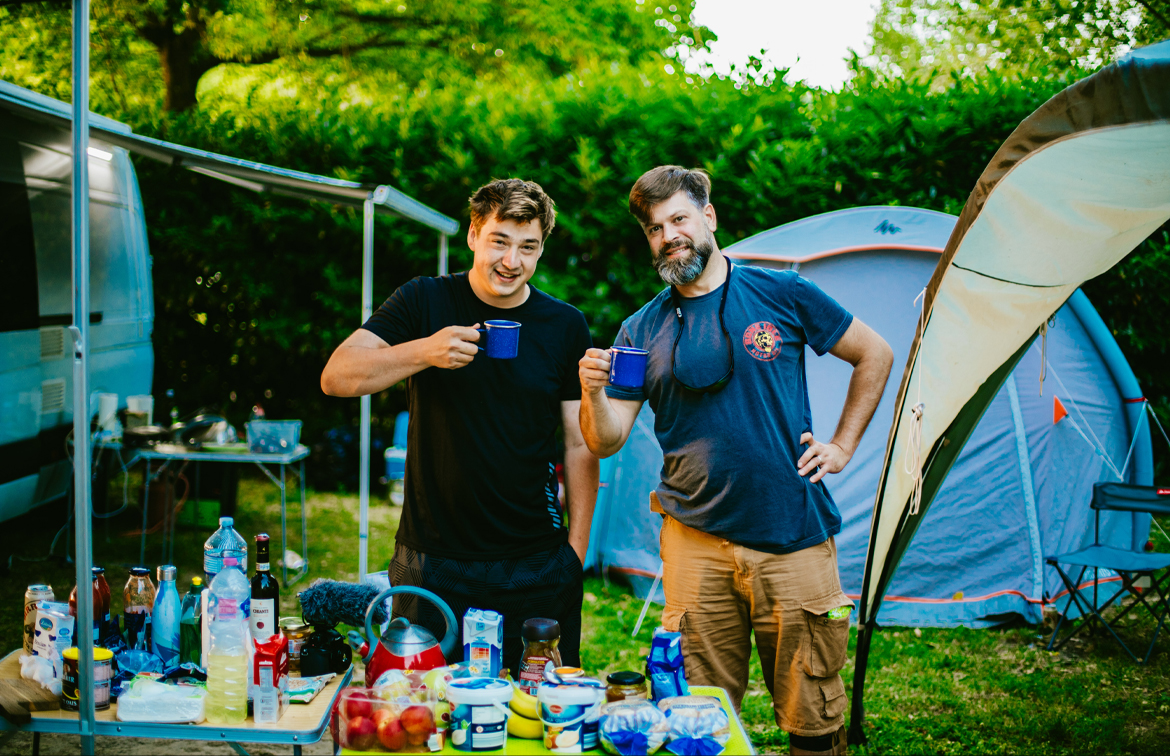
fuelling before take-off.
Ironically enough in the air, you cannot flee, and neither can you fight. In these stressful situations, I have taught myself to allow the disagreeable sensation to wash over me, and instead, I focus my mind on the task. It was Friedrich Nietzsche that coined the phrase “what doesn´t kill us makes us stronger”. So with this in mind I have conditioned myself to take a deep breath and allow myself to move with the wind, feel sway of the breeze and the harness, and tune my mind into the way with which the wing is pulling me and muscle memory and specific actions enable me to stable my flight altitude. It’s that moment when my feet hit the ground that my self-preservation instinct eases off and the jokes from fellow pilots ease out stress, and I finally breathed a sigh of relief.
During Skyweek I made a friend, he always lands on his backside. His name is Nick; he’s 58 years old, healthy and fit as a horse, he can run like a mule with the paramotor on his back. We became friends because we are similar in weight, both with 88-98kgs …he became my wingman. I came to fondly call Nick – McQuack because he always lands on his backside, like a duck touching down on water. He flys a behemoth of a wing, with no new technology to speak of. My equipement,on the other hand, is technologically the latest and greatest, my Ozone Roadster 3 (28m2) wing has TST’s (Tip Steering Technology). Morning banter between Nick and myself had reduced its name to TITS (when we were talking about how helpful that can be in in-flight manoeuvres).

What Skyweek offers any new or experienced paramotor pilot is the chance to go flying for a week or two. The most accessible thing about paramotoring is that it is a hobby-sport that anyone and everyone can partake in. Its easy, relatively safe form of powered aviation. The entire equipment fits into the boot of a small van or 4×4 car and can be assembled for flight very quickly (15-20mins). I am the type of person who loves a leisurely cross-country flight. A trip that takes me to 4’000ft, flying over varying terrains. Giving me time to practice my flying manoeuvres and come back to Earth safely and comfortably after 1.5 – 2 hours.
On the other hand, there is a more extreme side of paramotor with death-defying aerobatics. It’s not for the faint-hearted. But the benefits of a typical flight surpasses anything we can experience on the ground. There is an analogy for scuba diving – they say your first dive is like being an unborn baby, existing in the womb of water, silent and alone, nothing quite replicates that experience. I believe this is the next natural step for any man/woman who wishes to feel a different sensory experience. To back this idea up, I have a quote that I often find myself thinking about while I’m up there in the sky, and I feel it necessary to share it with you –
“Once you have tasted flight, you will forever walk the earth with your eyes turned skyward, for there you have been, and there you will always long to return.”
Leonardo da Vinci.
It’s important to mention you should have a passion for wanting to do this and to do it correctly is through a flying school with experienced and qualified people. Once you know how to paraglide, you’re halfway complete to understanding how to fly with a small engine on your back. Within a year, I have done a lot, I learnt to fly in Spain, I have flown paragliders in the French Alps, have soared in Italy, and soon I shall go to Dubai for the second time, to carry on my quest for global exploration.

Wherever you are in the world, you can fly with paramotors, it’s a hobby-sport that lends itself to any type of person.
I am happy I went on Skyweek, it was my first time experiencing it, and it certainly won’t be my last, and I will for the next 20/30 years of paramotoring development, hone my skills further.
As of now, I’m planning a trip to Denmark and Sweden with my new friend McQuack, so I wish anyone who took the time to read this article, the best of luck and to remember that this is a hobby sport for the people in this world looking for an experience with a world of benefits behind it.
For Those Who Dare…The SkySchool Story
As children, our curiosity and flying fantasies were fuelled while watching birds soar…taking to the skies with unbounded effortless freedom in endless skies. These fantasies turned to reality, while suspended on the numerous carefully calculated lines that dangle us precariously from our wing. We are the instructors of SkySchool, Europe’s leading paramotor training facility, successfully operating for fifteen years, and having trained over two and a half thousand students, all who have experienced that very same effortless freedom.
The evolution of the sport has been impressive and shows little sign of slowing, with advancements in safety, weight and power all opening up this incredible form of flying to a wider audience. Our courses offer professional training and result in competent and skilled pilots, ready to take to the skies in a safe and controlled manner. Once qualified, many of our former students return for our expeditions, known as SkyWeeks. Our latest SkyWeek saw 10 pilots meander through the stunning Italian landscape, stopping at various flying sites to do what they do best…fly!
With an incredible community of likeminded individuals behind us, and a 2020 calendar packed full of courses and SkyWeeks, we are eagerly awaiting the coming year. If paramotoring is a sport that you have considered, now is the time to grow your wings.
Alex Ledger
Alex@skyopsx.com